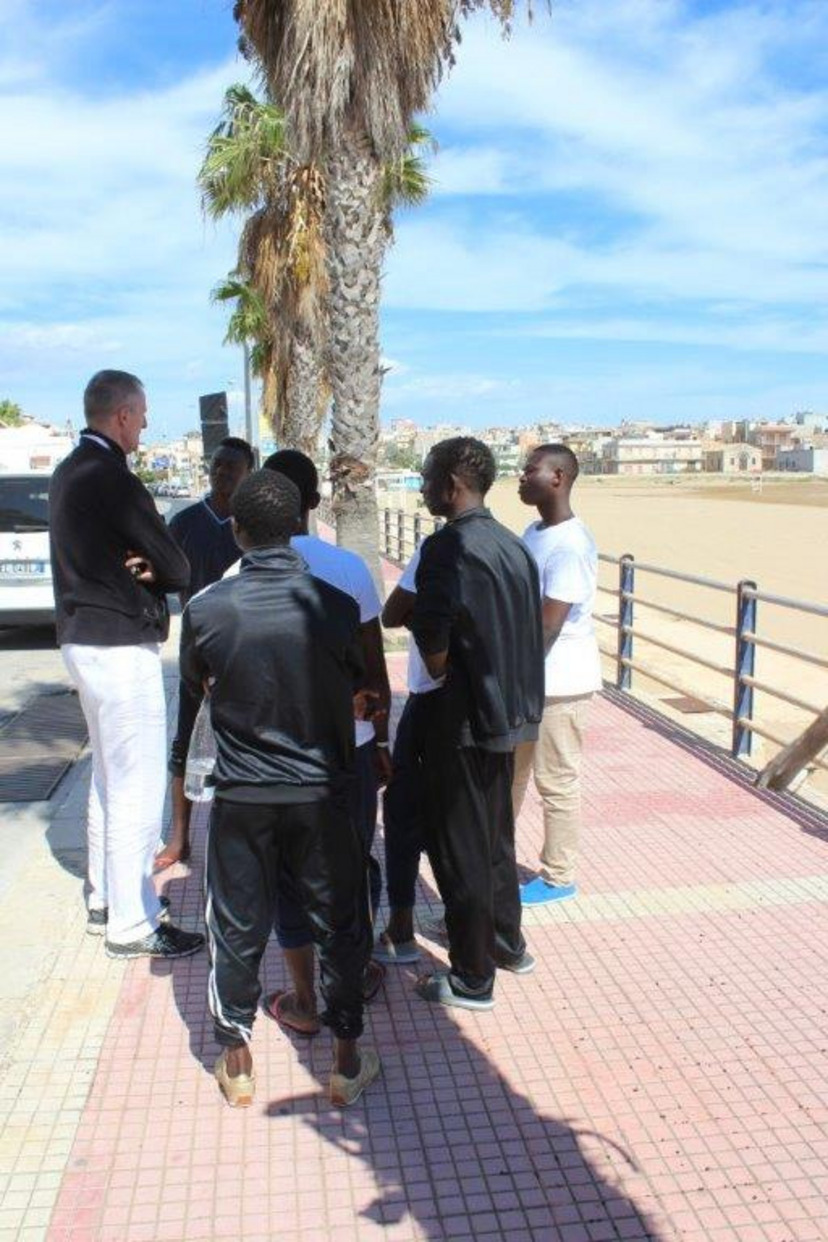Europe. For many people, that word means a better, safer existence. Persecuted at home or lacking any prospect of gainful employment, hundreds of thousands of people set off on a long, often treacherous journey each year, hoping to try their luck somewhere between Athens and Stockholm. Now that the Balkan route has been closed, Italy is once again the spot where most refugees enter Europe. In the past few days alone, some 12,000 people have been brought to Sicily after being rescued on the high seas in the Mediterranean.
The Italian Republic has traditionally been the country of origin or destination for many migrants. Hundreds of thousands of Italians left for North and South America in the 19th and 20th centuries, and after 1945 many others helped transform the societies of Western Europe, including Germany, as "guest workers". Conversely, of Italy's 61 million current residents, 5.5 million are migrants themselves or the children of migrants. Until the 1990s, workers from Tunisia and Morocco often found seasonal employment in the southern European country. Today’s immigrants come from Romania, Albania and Africa, and they often work illegally in the agricultural or construction sectors. In 2014, a new group began appearing: refugees.
The world's crises and conflicts and the difficult economic and political situation in many African countries have resulted in more than 100,000 people trying to reach Italy each year. In 2015, approximately 154,000 people made their way to the southern European country; so far this year, 132,000 have done so. Up to 10,000 people arrive in a single weekend, depending on the weather. Most are from West and East African countries like Nigeria, Eritrea, Sudan, Gambia and Cote d'Ivoire. Many are minors traveling without parents. The point of departure for the risky voyage is often the Libyan coast. That is where smugglers put the migrants to sea in old, barely seaworthy boats. In far too many cases the outcome is fatal: In 2016 alone, 3,000 people either died off the Italian coast or went missing.
Anyone who makes it to the mainland must then stave off a different sort of threat: the mixture of boredom and uncertain prospects that awaits asylum-seekers. Although Italy is a party to the Geneva Convention on Refugees and is one of the few European countries to have anchored the right to asylum in their constitutions, it has yet to adopt a comprehensive immigration policy and the country's public administrators are often inadequately prepared to deal with the newcomers. The result is that the conditions in the country's four main refugee shelters and its reception centers are often less than hygienic and the people living there have little or no privacy. At the same time, asylum applications are piling up, with 7,000 to 11,000 claims submitted each month. It often takes a year or more for them to be processed. In the meantime, the refugees are forced to do nothing at all. Many therefore leave the shelters and work illegally, barely managing to eke out an existence.
Once they arrive, moreover, the refugees find themselves in the midst of an uncertain, pessimistic society. The economy has stalled, a banking crisis looms, corruption remains widespread and many young Italians are concerned for their future. At 39 percent, the country now has the third highest youth unemployment rate in Europe. More than a few Italians consider the refugees to be competitors when it comes to finding work and housing. Finally, Sicily and southern Italy, the points of entry for most migrants, are two structurally weak regions that especially lack the resources to cope with this additional burden.
At the same time, some progress is being made: Most refugees arriving in Italy are now registered, and it is legal for recognized asylum-seekers to work. In addition, the German government announced this week that it would relocate 500 refugees each month from Italy to the Federal Republic.
What must Prime Minister Matteo Renzi and the Italian government do to integrate refugees faster and better into Italian society? In what areas does Europe need to provide Italy with more support? And what sort of joint effort is needed to combat the human traffickers plying their illicit trade on the North African coast? Our latest Factsheet provides answers to these questions and others.
![[Translate to English:] Vogelperspektive auf ein Rettungsboot voll mit Flüchtlingen und einem Hubschrauber im Mittelmeer.](/fileadmin/files/_processed_/9/7/csm_1038115954h_19.05178386_1240x900px_8dadc3f722.jpg)




